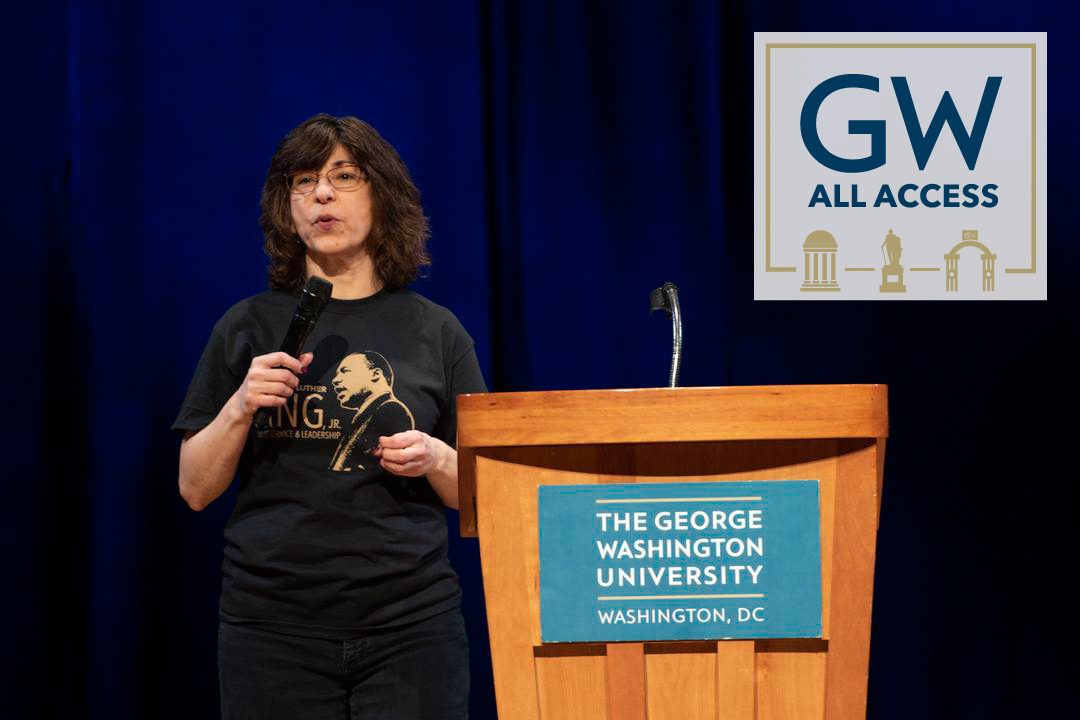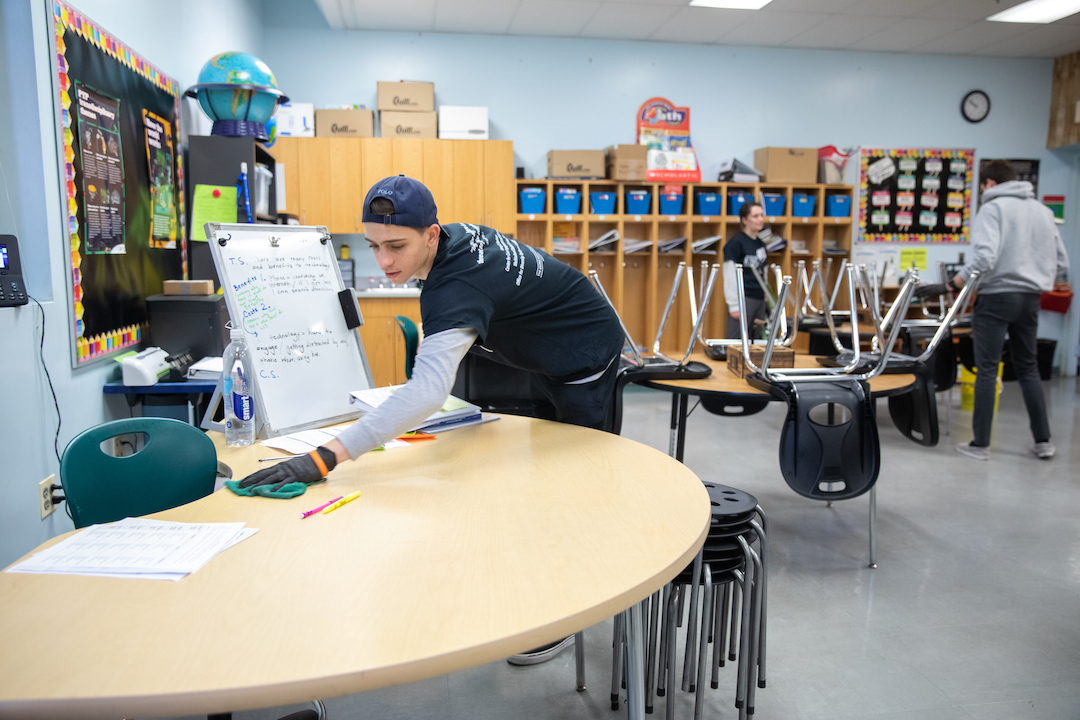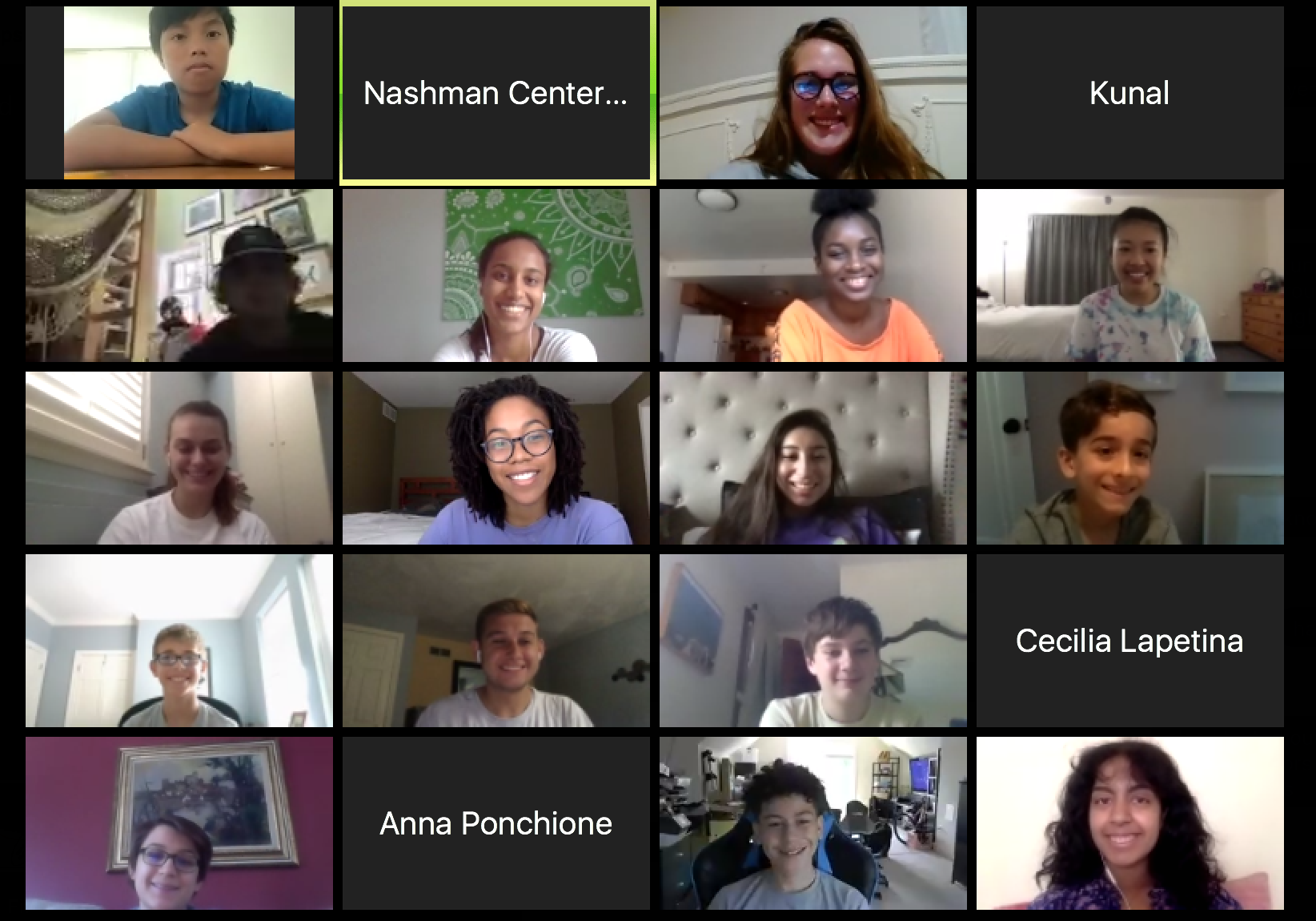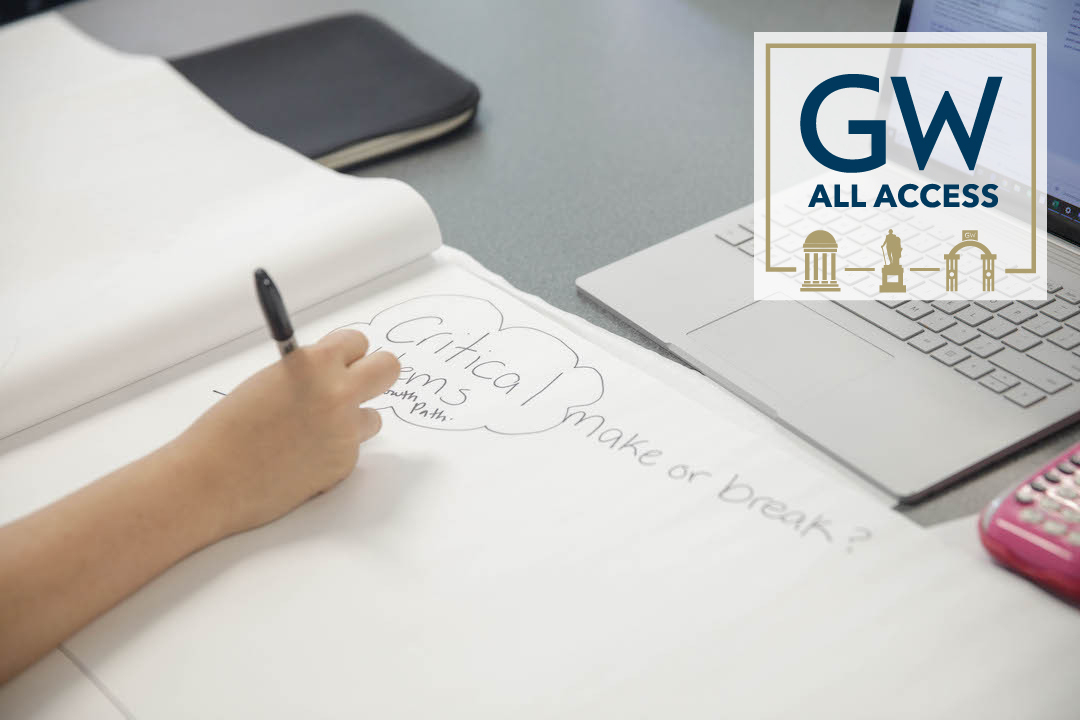By Briahnna Brown
In these uncertain times, it is especially important to reach out to others and provide support, said Amy Cohen, director of the George Washington University Honey W. Nashman Center for Civic Engagement and Public Service.
"We're always in a crisis in America: We have poverty, we have inequity—but this time, we have more people who are disconnected from the economy, disconnected sometimes from their family members," Ms. Cohen said.
There are numerous opportunities for GW students to make connections, Ms. Cohen said, even while staying at home. She said that the center has always looked for creative approaches to service work, and the virtual learning environment fosters more opportunities than students may expect.
"When the quarantine hit, we realized we had to pivot and make the switch to doing everything that we do online,” Ms. Cohen said. “We think of service beyond direct service anyway—not all of our programs are face-to-face or person-to-person.”
The center finished the spring semester with minimal face-to-face service and focused on community engagement activities such as helping create websites and access to virtual resources. Ms. Cohen credits the smooth transition to the students who sought out opportunities to serve or conduct research wherever they were.
Over the summer, because they knew that young Washington, D.C., students felt disconnected from their peers, they partnered with D.C. Public Schools to match GW students with D.C. students looking for mentorship.
The SummerTrek Changemakers program stemmed from that partnership. Through the SummerTrek program, GW students were able to help middle schoolers create social advocacy campaigns to make a difference in their community with topics including climate change, the COVID-19 pandemic and Black Lives Matter. Ms. Cohen said that many of the GW students who engaged in this work over the summer are still interested in doing tutoring or mentorship activities, so her office is working to make those things available for them.
The Nashman Center team spent the summer meeting with community partners to prepare for the fall. This included planning the virtual community service fair, where community partners set up virtual meeting rooms based on issue area and students were able to get to know the people they may be working with as well as the organizations’ core philosophies. Ms. Cohen said that nearly all of their partners have found ways to transform the work that they do to a virtual environment.
For example, one project would typically involve GW students meeting face-to-face with high school seniors in the School Without Walls to review and grade their senior theses. This year, because GW students cannot physically be there, the Nashman Center team will help to set up virtual rooms on Zoom based on topic area for the School Without Walls students to get the help they need.
"Even in the midst of a pandemic, we've been able to think about new structures and new ways of doing student-driven research and programming that we could have done in real life—things we're also making happen even though we're distance learning.”
GW students looking to engage in service work this semester can look at the GW Serves web page where the Nashman Center team keeps a list of all available service opportunities. Students can drop-in during daily virtual office hours for the center, or Ms. Cohen’s personal office hours at 4 p.m. every Thursday. Interested volunteers can even email the center to make an appointment to discuss service interests and find a matching opportunity, Ms. Cohen said.
She also said that students should look to peers who are engaging in service work to ask about getting involved because many service efforts are actually student-led.
"We try not to be a top-down organization,” Ms. Cohen said. “We try to be a student development group, so there's lots of student leaders who are available."
The Nashman Center team is still looking to engage in the hallmark GW service events this semester, Ms. Cohen said, such as the voting engagement that would typically include a party at the mailbox and tabling events. Even with the work the Nashman Center is doing to make the best of the virtual service, such as shifting the Convocation service work to the virtual Welcome Days of Service projects, Ms. Cohen said that she misses the physical GW community engagement where thousands would come out to serve and reach more people.
"While we make the best of this, there are lots of people we're not reaching, there are thousands of people throughout D.C. and the world who do not have an internet connection, and we're not seeing those people,” Ms. Cohen said. “I’m very much looking forward to seeing those people as well, and to seeing those students that we work with all the time.”





